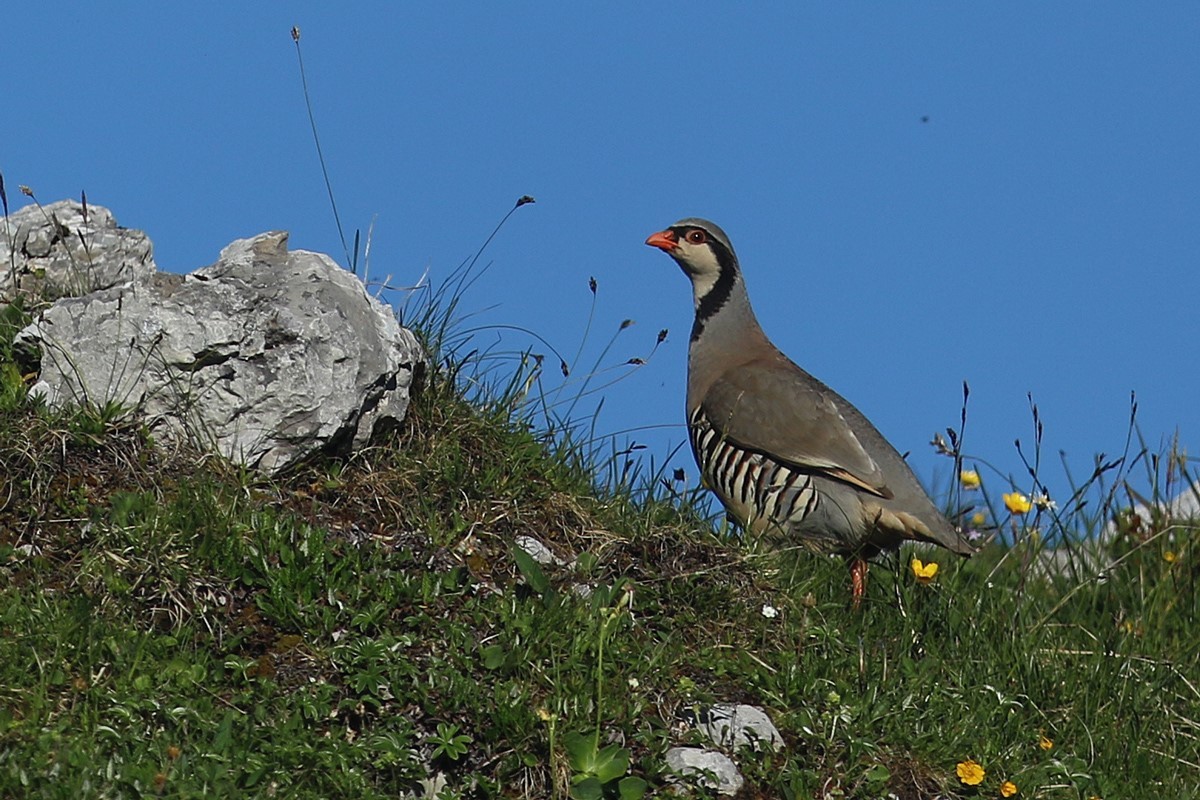Charger images
Les formats d'image autorisés sont de type jpeg, png ou gif
La taille maximale du fichier doit être de 20MB

A place for Vautour fauve, Aigle royal, Perdrix bartavelle, Pie-grièche à tête rousse, Sittelle de Neumayer.
The backbone of this hinterland is the massif of the Akarnanika Mountains (sometimes written as Akarnaniki), with the highest point of the Psili Koryphi at 1,589 m.
35% of the breeding pairs of Vautour fauve in mainland Greece nest here (14-15 pairs out of a total of 40-42 pairs), while ~50% of the total population of the species (up to 90 individuals) in mainland Greece overwinters in the area. Rising above the western coast, the imposing cliffs of Tserekas are their main nesting place. They also hold two breeding pairs of Aigle royal.
Gateway to the Tserekas Cliffs, the village of Paleros (Palairos) lies some 30 km or about half an hour’ drive from the resort island of Lefkada. Click on the "P" in the map for directions.
Although the area is best known for Lefkada, there are several smaller resorts nearby, from Amfilochia, Aktio and Vonitsa on the shores of the Amvrakikos Gulf, to Palairos, Mytikas and Astakos further south.
#AkarnanikaSOS alert: The already installed wind turbines and the new, irregularly licensed 16 wind stations (of 1 a/c each!), which are just around the corner, threaten irreversible destruction of the most important area for vultures in mainland Greece, portending a bleak future for the critically endangered species. The question is whether the Akarnanika Mountains will remain an extensive natural area with landscapes of wild beauty, and of course a stronghold of raptors, or whether it will become a huge industrial energy production zone and an "ecological trap" for vultures.
Votre feedback sera transmis à l’auteur.rice de cette zone et à l’équipe éditoriale de Birdingplaces, qui l’utiliseront pour améliorer la qualité des informations. (Vous souhaitez publier un commentaire visible en bas de page ? Fermez cette fenêtre et choisissez l’Option 1 : « Publier un commentaire, un conseil ou une observation ».)
Veuillez fournir des suggestions d'améliorations ou d'ajouts au texte de ce site ornithologique.
Veuillez fournir vos suggestions d'améliorations ou d'ajouts à la carte.
Veuillez fournir des suggestions d'améliorations ou d'ajouts à la liste des oiseaux.
Cliquez sur l'icône de l'oiseau () Insérez les noms d'oiseau dans votre langue. Ils seront automatiquement traduits pour les autres usagers !